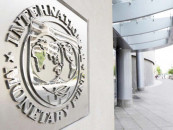Pakistan’s gender gap in mobile connectivity
A staggering 201 million adult women remain unconnected in South Asia

South Asia has the lowest rate of mobile phone ownership for women worldwide. According to the GSMA, the global industry association of mobile network operators, the mobile ownership rate for women in South Asia is a paltry 62%, with a staggering 201 million adult women unconnected. This regional figure is even lower than that of Sub-Saharan Africa, where 75% of the women own a mobile phone. But this is not the only metric that South Asia lags in; only 38% of its adult women population uses mobile internet, which is once again the lowest proportion in the world.
There is a strong gender dimension to these startling figures. The gender gap in mobile ownership and in mobile internet usage, or the percentage difference in these figures between men and women relative to men, is the highest in South Asia, at 19% and 36% respectively. As a region, these are not metrics that we want to be leading in. However, the problem does not stop here. If we focus our attention to within South Asia, it becomes evident that this issue is the most pervasive in Pakistan.
Only 52% of the adult female population in Pakistan owns a mobile phone, with merely 21% of Pakistani women using mobile internet. These figures are considerably better for our next-door neighbour India, where 67% and 30% of the women own mobile devices and use mobile internet respectively. Furthermore, there is significant gender disparity when it comes to mobile ownership and internet usage in Pakistan. For instance, 34% fewer women own mobile devices in Pakistan relative to men, whereas 43% fewer women use mobile internet as compared to their male counterparts.
There are many reasons to be concerned with both the absolute (low) levels of connectivity and the magnitude of the connectivity gap between men and women. For one, uneven access to connectivity-enhancing technologies such as mobile phones and internet can exacerbate and reinforce existing gender inequalities in the country. The lack of mobile ownership and internet usage can hinder women from accessing economic opportunities that would otherwise be available to them to a greater degree. This has become all the more relevant during the pandemic, where social distancing guidelines and rapid improvement in various online marketplaces and services (for education, health, logistics, e-commerce etcetera) has further increased the returns on connectivity.
Such lack of connectivity limits both the physical and the digital mobility of women, negatively impacting their socioeconomic outcomes in a labor market that already constraints their meaningful participation. It also disproportionately impacts women in the lower and lower-middle income strata, increasing their dependence on their extended households.
It may be insightful to examine the factors that have contributed to these abysmal levels of mobile ownership and internet usage for women in Pakistan. According to the GSMA 2021 survey, 27% of Pakistani women reported that their difficulties in reading and writing was the top barrier in their meaningful engagement with their mobile devices to access the internet. This is not surprising, given that Pakistan has one of the lowest adult female literacy rates in the world, at 46% (2019). Another important factor is the cost of handsets and mobile data, with 17% and 11% of female respondents identifying these two as a main barrier to their mobile internet usage respectively. Finally, there is the prevalence of socio-cultural barriers, with around 27% women noting that their families do not approve of their mobile internet usage, a factor reported as a major barrier by only 6% of Pakistani men.
The above diagnosis has several policy implications for the government. First, it signals that a lack of affordability is negatively affecting the adoption of mobile devices and internet services by Pakistani women. The recent increase in withholding taxes on cellular services from 10% to 15% is then a regressive policy measure that will further dent the uptake of mobile internet services by Pakistani women. Interestingly, while women smartphone ownership in India rose sharply from 14% to 25% between 2019 and 2020, it only grew from 20% to 22% in Pakistan during the same period, with affordability being a key driver. The government needs to reevaluate and harmonize its taxation of this sector, with a view to both improve gender equity outcomes and to induce positive spillovers that can result from a more digitally connected population.
Second, while the Universal Coverage Fund (USF) established by the government has focused on improving network coverage in the country’s un-served and under-served geographies, it has not offered any interventions to address the gender-based connectivity disparities in the country. This needs to change. Additionally, in the medium term, the government needs to work with its development partners to implement community-led digital literacy initiatives that use peer-learning as their pedagogical approach.
Mobile network operators, cell phone manufacturers and microlending startups also need to contribute by delivering innovative products and business models that serve the interests of their diverse consumer base inclusively. In India, JioPhone, an LTE-enabled handset launched by Reliance Jio, proved to be a game changer by rapidly increasing access to digital connectivity in the country, costing 24% of the monthly income of an average Indian. Local industry players should endeavour to roll out similarly disruptive solutions to transform Pakistan’s mobile connectivity landscape.
Published in The Express Tribune, February 19th, 2022.
Like Opinion & Editorial on Facebook, follow @ETOpEd on Twitter to receive all updates on all our daily pieces.
















COMMENTS
Comments are moderated and generally will be posted if they are on-topic and not abusive.
For more information, please see our Comments FAQ